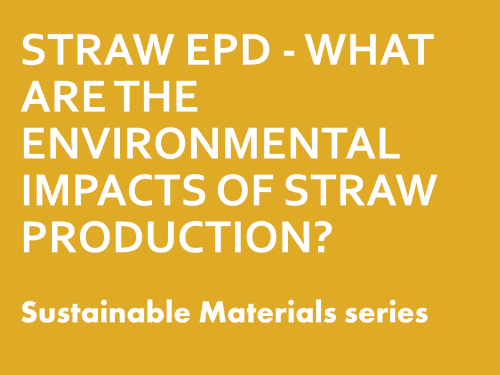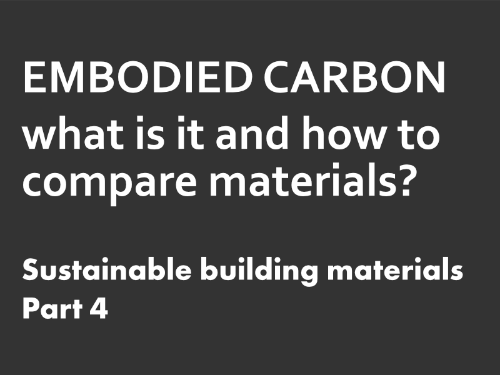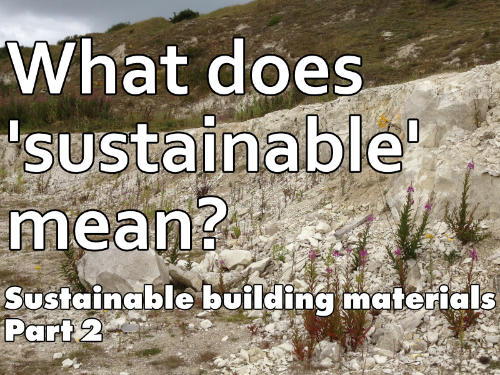Articles on some of the different facets of making a sustainable building

Is there enough straw to build with? Sustainable Materials series
It’s been a while since I updated my calculation of how much straw was available in the UK to build with. A little while of delving into UK government statistics later, and here are the updated results.

Straw EPD - quantifying the environmental impacts of straw production
In October last year an Environmental Product Declaration (EPD) was published for Straw as Insulation Material in the UK. This was the culmination of months of research and discussions, funded and led by The School of Natural Building and the European Interreg-funded project Up Straw project.

Life Cycle Assessment, Part 2: example carbon assessment for a Passivhaus building.
This post follows directly from the last two, which looked at ways to compare the embodied carbon of different materials. This post puts that into practice with an example using life cycle assessment to compare the differing carbon impacts of different options for a passivhaus design.

Embodied Carbon - what is it and how to compare materials? Sustainable building materials, Part 4
Sustainable building must mean producing as little CO₂ as possible. That means low or zero carbon emissions from both construction and use of a building. Choices of material can have a huge impact on this.

How insulating is strawbale? Sustainable building materials Part 3 - revised
Knowing the thermal conductivity of any material you build with is essential. Without it you can’t calculate the energy balance of any building or do any kind of heat flow calculations, from simple U value calculations to complex thermal bridging assessment.

Natural vs Sustainable - in film form.
I decided to make a short film illustrating my recent Natural vs Sustainable post. Here it is! I had limited time to make it, but if people find it helpful or interesting then I might make more.

What does 'sustainable' mean? Sustainable building materials, Part 2
In the last blog I talked about the term ‘natural’ in relation to buildings and sustainability, concluding that it was unhelpful at best, as it doesn’t really tell us anything about a product’s provenance, sustainability, or even level of processing (e.g. wood-fibre board and strawbale and are both described as ‘natural materials’ but neither would exist in their useful form without mechanised human intervention).

Natural vs Sustainable - Sustainable building materials, Part 1
The word ‘natural’ is often used as shorthand for ‘sustainable’ - but should it be? Is a natural building material automatically sustainable, and are the only sustainable materials natural ones? What does the word ‘natural’ really mean anyway? Come to that, what does the word ‘sustainable’ really mean?

